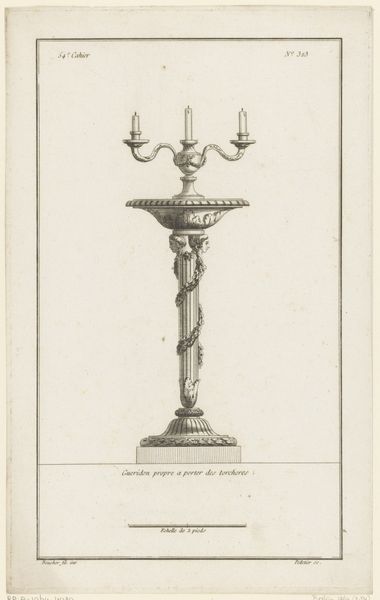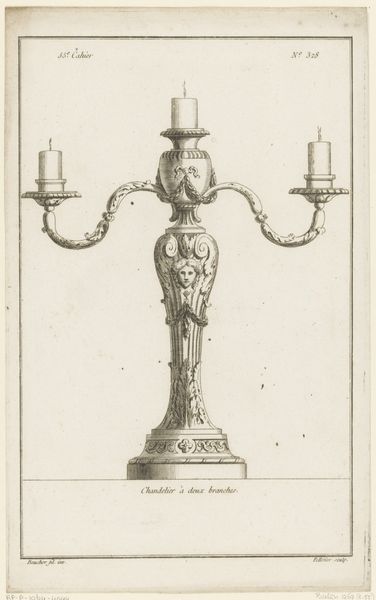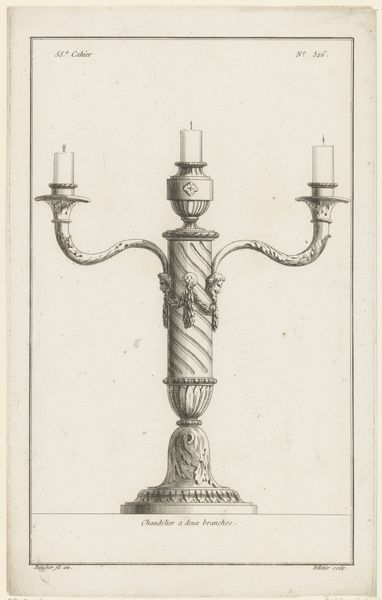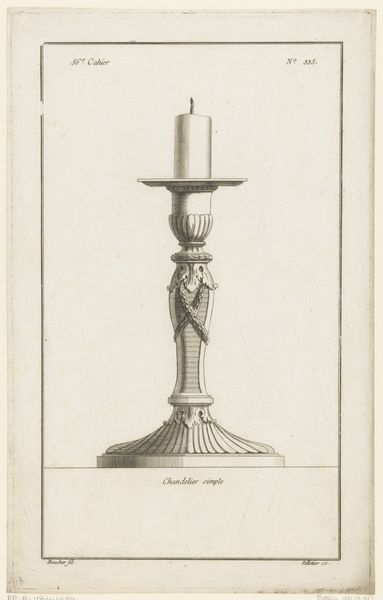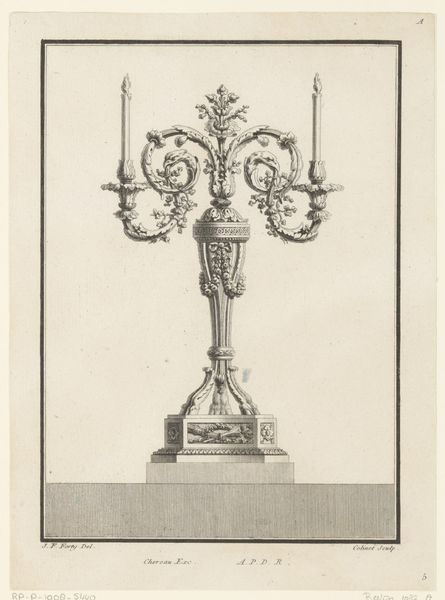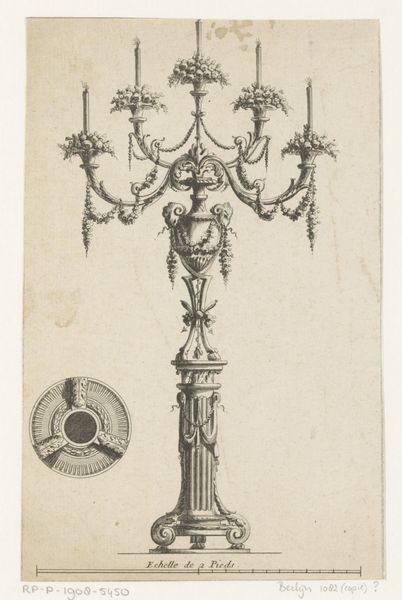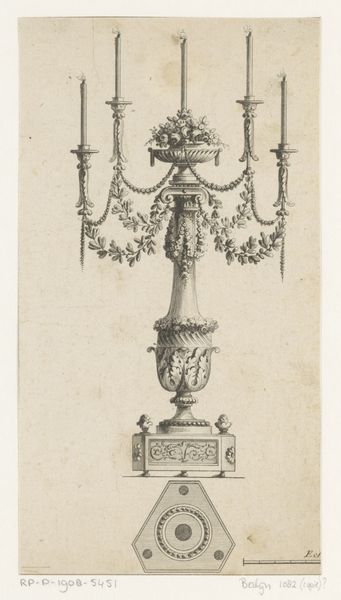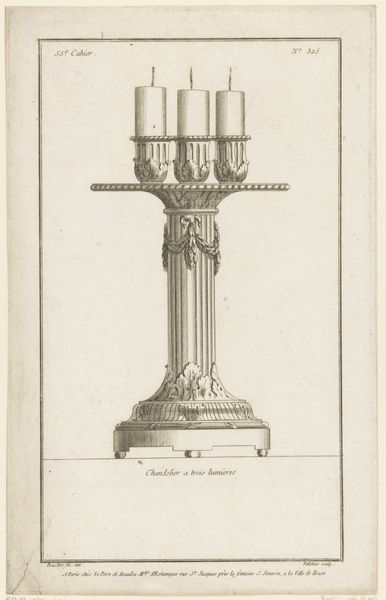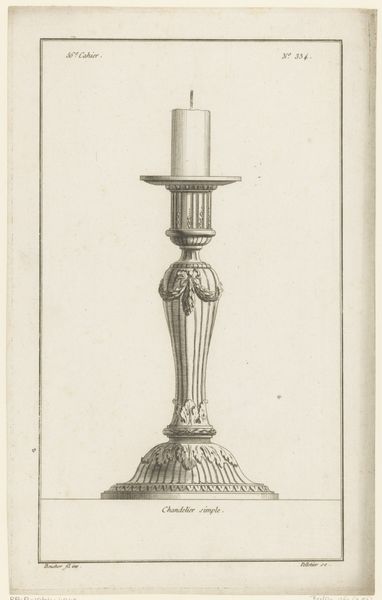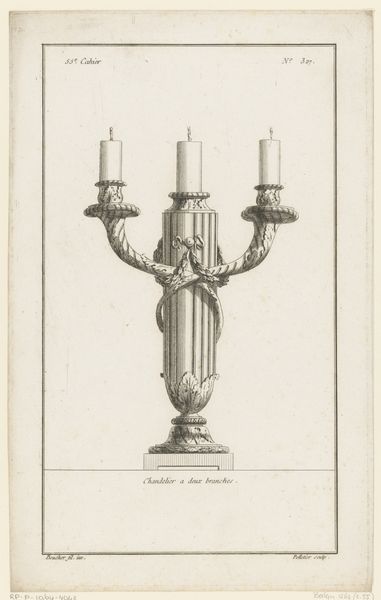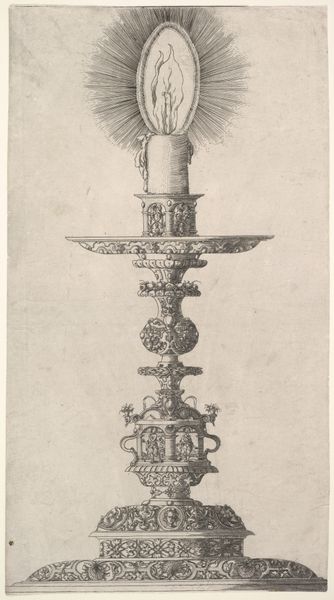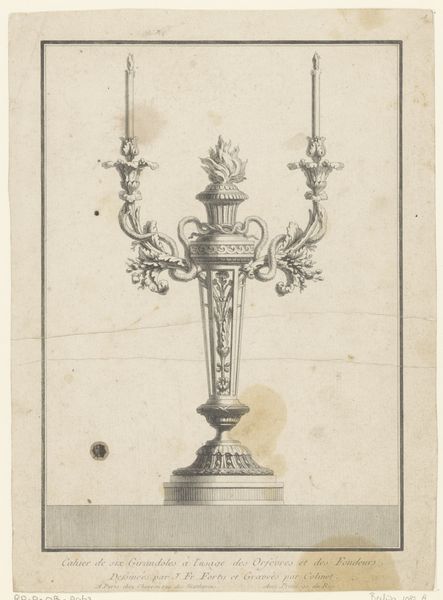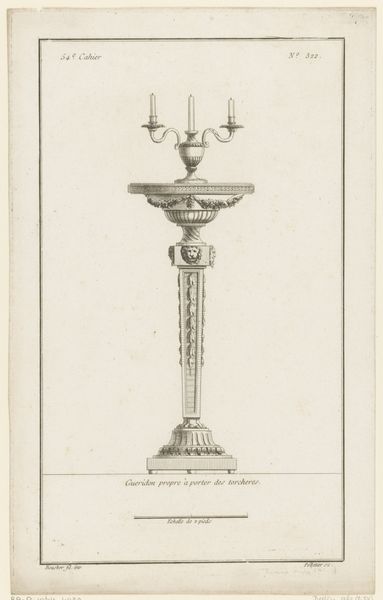
Dimensions: height 329 mm, width 205 mm
Copyright: Rijks Museum: Open Domain
Editor: This is a drawing and engraving by Jean Pelletier, titled "Kandelaar met leeuwenkop," which translates to "Candlestick with Lion's Head," created sometime between 1772 and 1779. It's very detailed; you can really see the Baroque influence in all the ornamentation. What catches your eye about this design? Curator: The process by which this design was rendered into an image fascinates me. Think about the division of labor implicit here. Pelletier, as the designer, conceptualized a luxury object – a candlestick crafted, presumably, from precious metals. Editor: Right, so the drawing then becomes a blueprint of sorts for metalworkers? Curator: Exactly. The engraving, itself a form of industrial reproduction, then disseminates this vision to potential clients or other artisans. We need to ask, who consumed these images and to what end? Was it a catalog, a portfolio piece for the artist, or something else entirely? The materiality of the print itself—the paper, the ink—speaks to the burgeoning print culture of the 18th century and its impact on decorative arts. Editor: So you're thinking about the engraving not just as art, but as a key element in a whole production and consumption cycle? Curator: Precisely. And that lion's head isn't just decorative; it speaks to status, power, and the aspirations of the consumer. Who had access to such luxury, and what did this object signify in their world? It’s a peek into the socio-economic landscape. Editor: That’s really interesting! I never considered the social life of design prints before. Thanks for pointing that out. Curator: Of course. Looking at it this way helps us understand the social and economic forces shaping even seemingly simple decorative objects.
Comments
No comments
Be the first to comment and join the conversation on the ultimate creative platform.
